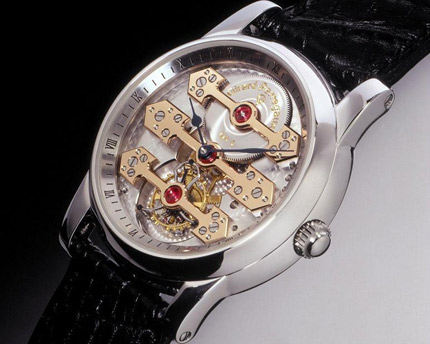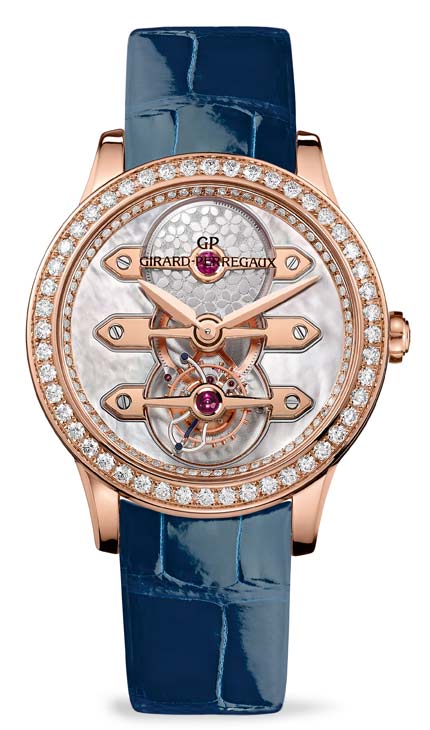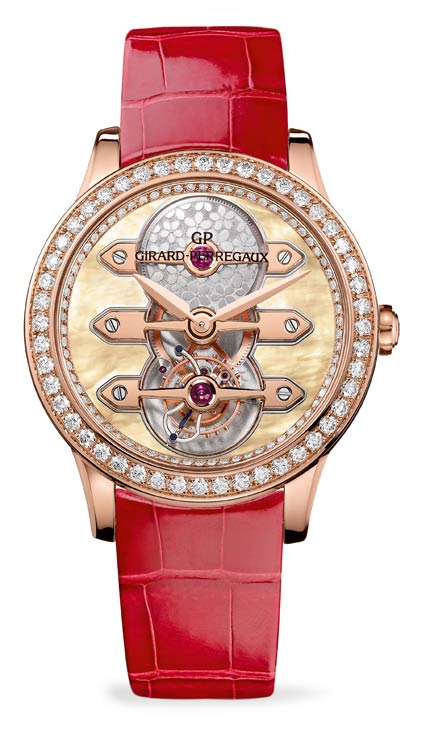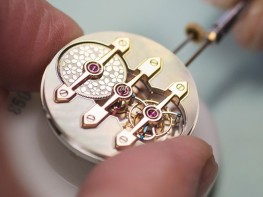The Tourbillon with Three Bridges, a Girard-Perregaux signature, was developed by Marie Perregaux’s husband Constant Girard in the 1860s. The watchmaker took a special interest in tourbillon movements – an invention dating back to 1801 – and conducted in-depth research on their structure. His three bridges were originally straight, parallel and made from nickel-plated metal. They were redesigned as arrows and made of gold from the late 1870s onwards. To protect his design in the absence of a competent Swiss bureau at the time, Constant Girard had to resort to the United States Patent Office, which duly granted him the patent on March 25th 1884. Three years later, his invention earned the supreme accolade in the form of a gold medal at the World’s Fair in Paris. The watch in question, subsequently named La Esmeralda, is an historical gem that may now be admired in the Girard-Perregaux Museum.
While the Tourbillon with Three Bridges also won other prizes in chronometry (precision-timing) competitions, it essentially owes its legendary status to its aesthetic originality. Constant Girard succeeded in transforming functional bridges into exceptionally powerful and instantly recognisable design elements. He nonetheless kept the traditional set of three, as still found on many contemporary movements: the barrel bridge (or barrel-bar), the gear-train bridge and the balance bridge (balance-cock) – with the latter becoming a tourbillon bridge when the regulating organ is of that particular type.
1991, first Tourbillon with Three Golden Bridges wristwatch
Production of classic Tourbillons with Three Bridges, which was confined exclusively to pocket-watches, was interrupted in 1911, eight years after the founder’s demise. The renaissance in 1982 represents a minor miracle. Girard-Perregaux, which had repurchased La Esmeralda in the late 1960s, introduced a re-edition in the midst of the quartz crisis, a time when mechanical watchmaking was facing a very uncertain future. This was a daring decision and the company watchmakers achieved an amazing feat in regaining mastery of long-abandoned techniques. It took around 1,500 hours of work to make the first watch in a 20-piece limited series that naturally stretched over several years. In 1991, Girard-Perregaux took the opportunity of its bicentenary to present the first miniaturised version in a wristwatch size, heralding the start of an epic modern adventure featuring an amazing wealth of interpretations. Whatever their style, these watches never betray the original architectural concept and the signature remains clearly apparent.
Excusive floral décor
Women are regularly treated to dedicated creations that are no exception to the rule, as in this Tourbillon with Three Gold Bridges Lady being launched at the end of 2013. On the technical side, it is driven by a self-winding movement equipped with a platinum micro-rotor patented in 1999. To ensure the latter does not impair the overall structure, it is cleverly hidden beneath the barrel and spins on the same axis. In aesthetic terms, the new model features three arrow-type bridges with softened contours, an exclusive floral décor crafted on the barrel drum, as well as a mother-of-pearl dial and sparkling rows of diamonds. The two pink gold models are distinguished by the colours of their dials and straps: white mother-of-pearl and a blue strap for one; and gold-toned mother-of-pearl and a red strap for the other.








